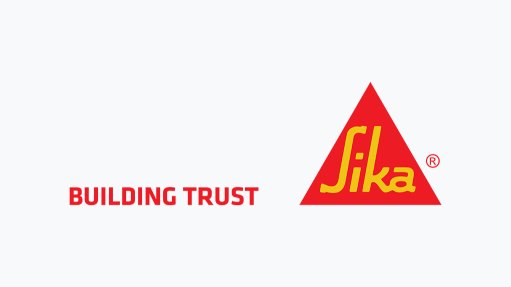Blasting solution proposed for reactive iron-ore applications


SOIL SCIENCE A team of experts at BME have explored the variations of acidity in soil and the effects they have on blasting in the iron-ore mining sector
A decline in blast performance at an iron-ore mine in South Africa has led to the investigation of a new mechanism to prevent bulk emulsion breakdown, and to find innovative solutions to address such challenges for the client, reports bulk explosives and blasting solutions company BME.
In a recent article in the International Society for Explosives Engineers’ Journal of Explosives Engineering, experts from BME reveal a fascinating encounter with potential acidic sulphate soil (PASS), sharing valuable insights with the mining sector globally.
The article’s authors – BME blasting science GM D Scott Scovira, BME production and logistics GM Dirk Voogt and BME senior chemist Quentin Steyl – note that iron-ore mines are not normally associated with reactive or acidic ground.
In investigating the PASS phenomenon, the authors conducted ground sample reactivity testing which confirmed that neither reactive ground nor acidic water were to blame for the breakdown of the emulsion.
This meant that further analysis was required to determine why the emulsion broke down, while the same emulsion continued to be used by other clients around the country to normal effect.
They conducted many tests, including the testing of a mixture of the straight gassed bulk emulsion plus mine blast hole water and blast cuttings – representing the total hold loading condition at the mine.
These tests showed that this mixture created an environment in the blast hole leading to autocatalytic acid generation, with subsequent over-gassing and breaking down of the emulsion.
“A deeper investigation into the ground mineralisation revealed the presence of PASS, which is a new mechanism for bulk emulsion breakdown,” the authors reveal.
The condition was “remarkably uncommon”, they note, pointing out the instance was the first occasion of such PASS being observed in over 50 years of emulsion use.
Despite an extensive search of publicly available knowledge in this field, no mention of PASS in the context of bulk emulsions could be found by the BME team.
The authors note however, that research did reveal that PASS can become an actual acid sulphate soil (AASS) in the presence of a strong oxidiser.
“This conversion reaction results from the presence of reduced inorganic sulphur (RIS) in the soil,” they explain.
Further, AASS – soil materials that contain RIS – have undergone oxidation to produce acid; any chemical composition drop indicating the soil’s potential to form sulphuric acid when it is disturbed and exposed to oxygen.
In the absence of water, soil samples from the iron-ore mine showed no reactivity with the straight gassed bulk emulsion; but, some samples showed the potential to become reactive, and to start breaking up when a strong oxidiser was present, the authors point out.
When a sodium-nitrite-based gassing solution was used to sensitise the emulsion in contact with soil, a reaction started that impacted negatively on the emulsion matrix, they elaborate.
“To manage this challenge, we therefore investigated the difference between the effect of standard sodium nitrite and water solution, and an emulsified gassing agent [EGA],” they explain.
“EGA is an emulsion which is incorporated more readily into the base emulsion – thus preventing contact between the gassing agent, a strong oxidiser, and the PASS.”
It was this homogenising of EGA into straight bulk emulsion which significantly inhibited PASS ground reactions with the emulsion, creating a product of very high viscosity which held its form. The resulting emulsion was found to reduce contact between the gassing agent and the PASS.
“These modifications to the bulk explosives system have provided a window of protection for the straight bulk emulsion against these site ground conditions,” the authors note, adding that they have also enhanced resistance to product degradation by the action of dynamic water present at the mine site.
With these findings taken into account, important performance improvements were achieved, with the increased dispersion of the gassing agent in the emulsion, as well as reduced bubble size in the gassing agent.
Field measurements demonstrated that detonation velocity was increased when compared to non-homogenised gassed bulk emulsion.
As PASS has been only recently discovered as an emulsion decomposition mechanism, the authors expect there will be considerable learnings achieved in the future.
“The focus will be on continuously improving the inhibition process against sulphate ground types through chemical formulation and mechanical manipulation,” they conclude.
Article Enquiry
Email Article
Save Article
Feedback
To advertise email advertising@creamermedia.co.za or click here
Press Office
Announcements
What's On
Subscribe to improve your user experience...
Option 1 (equivalent of R125 a month):
Receive a weekly copy of Creamer Media's Engineering News & Mining Weekly magazine
(print copy for those in South Africa and e-magazine for those outside of South Africa)
Receive daily email newsletters
Access to full search results
Access archive of magazine back copies
Access to Projects in Progress
Access to ONE Research Report of your choice in PDF format
Option 2 (equivalent of R375 a month):
All benefits from Option 1
PLUS
Access to Creamer Media's Research Channel Africa for ALL Research Reports, in PDF format, on various industrial and mining sectors
including Electricity; Water; Energy Transition; Hydrogen; Roads, Rail and Ports; Coal; Gold; Platinum; Battery Metals; etc.
Already a subscriber?
Forgotten your password?
Receive weekly copy of Creamer Media's Engineering News & Mining Weekly magazine (print copy for those in South Africa and e-magazine for those outside of South Africa)
➕
Recieve daily email newsletters
➕
Access to full search results
➕
Access archive of magazine back copies
➕
Access to Projects in Progress
➕
Access to ONE Research Report of your choice in PDF format
RESEARCH CHANNEL AFRICA
R4500 (equivalent of R375 a month)
SUBSCRIBEAll benefits from Option 1
➕
Access to Creamer Media's Research Channel Africa for ALL Research Reports on various industrial and mining sectors, in PDF format, including on:
Electricity
➕
Water
➕
Energy Transition
➕
Hydrogen
➕
Roads, Rail and Ports
➕
Coal
➕
Gold
➕
Platinum
➕
Battery Metals
➕
etc.
Receive all benefits from Option 1 or Option 2 delivered to numerous people at your company
➕
Multiple User names and Passwords for simultaneous log-ins
➕
Intranet integration access to all in your organisation















